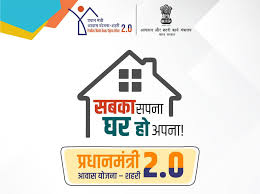Pradhan Mantri Awas Yojana, Urban (PMAY-U) has been India’s flagship scheme to achieve “Housing for All” by providing pucca (permanent) homes to low- and middle-income urban families. Before PMAY-Urban 2.0, the scheme had already sanctioned a large number of homes and delivered many of them. But enough challenges remained: application backlog, slow verification, delays in construction, limited awareness among eligible beneficiaries, and homes pending completion. Recognizing these gaps, the government launched PMAY-Urban 2.0 in September 2024 to revamp and accelerate delivery, deepen inclusion, and ensure no eligible family is left behind.
To push implementation further, the government has rolled out Angikaar 2025, a nationwide “last-mile” outreach campaign running from 4 September to 31 October 2025, under the Ministry of Housing & Urban Affairs. The campaign aims to fast-track application verification, speed up completion of already sanctioned homes, and increase awareness among eligible beneficiaries. It will work through over 5,000 Urban Local Bodies (ULBs) using door-to-door drives, housing camps, information kiosks, community mobilization, and convergence with related schemes.
A key date in the campaign is 17 September 2025, marked as PMAY-U Awas Diwas, which celebrates one year of PMAY-Urban 2.0. Alongside this, “PM Awas Mela – Shehri” is being held from 17 to 27 September (with another phase later in October) to bring services closer to people, help desks, on-the-spot verification, loan melas, and information about scheme benefits.
Under PMAY-Urban 2.0, an additional 1 crore urban families are to receive financial support of up to ₹2.50 lakh each to build or purchase a permanent house. The scheme also gives priority to vulnerable groups, such as slum dwellers, street vendors, artisans, and others, to ensure equity. Families belonging to EWS, LIG, and MIG categories are eligible, subject to the criteria.
As of August/September 2025, some measurable progress is visible under Angikaar 2025 and PMAY-U 2.0. An additional 1.47 lakh pucca houses have been approved in 14 states and UTs during a recent Central Sanctioning & Monitoring Committee meeting, bringing the total sanctioned under PMAY-U 2.0 to 8.56 lakh homes. Also, large numbers of houses have been designated for marginalized communities: 32,551 for Scheduled Castes (SC), 5,025 for Scheduled Tribes (ST), and 58,375 for Other Backward Classes (OBCs).
The design of Angikaar 2025 includes mechanisms to ensure faster, more transparent implementation: document verification, geo-tagging, field-level mobilization, on-the-spot registration, awareness drives, and use of various outreach tools. These are meant to reduce delays that often afflict housing schemes and ensure that eligible households understand and avail themselves of their rights.
The expected benefits are wide-ranging. Faster completion of houses will reduce the wait time for families who have applied; improved awareness and outreach will help include those who are often left out, such as slum dwellers, marginalized communities, women, etc. Affordable financial support under the scheme will reduce dependence on informal housing or poor-quality dwellings. The associated convergences (e.g., Surya Ghar: Muft Bijli Yojana) will ensure homes have basic amenities like electricity, improving living standards.
Challenges remain: ensuring that ULBs, states, and local bodies have adequate capacity to verify applications and documents; ensuring quality of construction; making sure that benefits reach remote or underserved urban pockets; handling infrastructure and basic services in tandem with housing; and sustaining momentum beyond the campaign period. If these are managed, the PMAY-U 2.0 scheme, combined with Angikaar 2025, can accelerate India’s path to fulfilling the promise of housing equity in urban centers.










